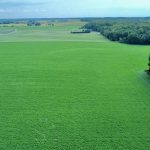CONSUL, Sask. – The allocation policy at Prairie Farm Rehabilitation Administration community pastures is due for an update and pasture users will be part of the process, said PFRA officials.
Hugh Cook, head of livestock management, told a Jan. 23 meeting of ranchers that there are complaints about the current policy, which hasn’t changed since 1998.
While several areas have been identified for change and improvement, he said nothing is cast in stone.
“We haven’t formed any kind of a policy change,” he said.
But he would like a representative from each of the 85 PFRA pastures to attend a meeting in Regina in June to discuss ways to better accommodate existing and potential patrons.
Read Also

Forecast leans toward cooling trend
July saw below average temperatures, August came in with near to slightly above average temperatures and September built on this warming trend with well above average temperatures for the month.
“We’re continually getting calls asking for interpretation” on existing policy, he said in an interview.
A main concern is equitable allotment.
Cook said the community pasture program can’t graze all the cattle that producers apply for each year. In drought years, the problem is worse.
When the applications came in for the 2007 grazing season, 40,000 cows couldn’t be accommodated, he said.
“Access is difficult where demand is high,” Cook said.
Some ranchers, like those in the southwest where four PFRA pastures in one rural municipality supply most of the grazing land, believe access should be limited to locals. They say the name ‘community’ pasture implies just that.
But PFRA offers a public land grazing system, which infers equitable access, said Cook. Patrons can’t be disqualified from using a pasture because they live far away.
Fred Halladay, a patron of Govenlock pasture, said about 130 of 200 households in the area use one of the four pastures.
Allowing “outside” applicants would directly affect the viability of their operations, he said.
“It will affect our community for sure,” he said. “We’re fighting an uphill battle to keep our young people here now.”
He also said that the limit of 60 head per patron allowed in one pasture is too low.
In 1993, both patrons and the PFRA determined that 60 head was a reasonable limit per pasture to provide access for everyone. The minimum is 10.
There is some difficulty in determining how that 60-head limit should be applied.
Cook said PFRA has accepted applications from both husbands and wives, for example. They could have separate herds, but they might not. There could in fact be multiples of 60 from the same operation in one pasture.
Halladay said even if limited to 90, some families would still struggle.
But some pasture advisory committees have restricted cattle to less than 60 to accommodate more producers.
Cook said community pastures are not supposed to be the sole source of grazing, but to supplement land owned by the ranchers.
“We want to throw this out to clients again,” he said at the meeting.
The definition of intergenerational transfer is another issue. Does this only mean father to son, or could it mean grandfather to grandson, he said. And what about a transfer between an uncle and a nephew?
He assured patrons at the meeting that intergenerational transfers will not be discontinued.
Another concern is the undefined client. This is where corporations, limited companies, co-operatives and others have applied for space.
Cook said it’s impossible to know if the people involved in those groups are bone fide farmers. PFRA has been asking people to apply in their own names so that they can keep track of who actually has cattle in the pasture.
PFRA would also like to address a loophole that allows patrons to retain space even though they have sold their operations. The current policy allows for a yearly reduction that could allow an ineligible patron to keep cattle in the pasture for about 20 years.
“We want to accelerate that guy out the door,” Cook said.















